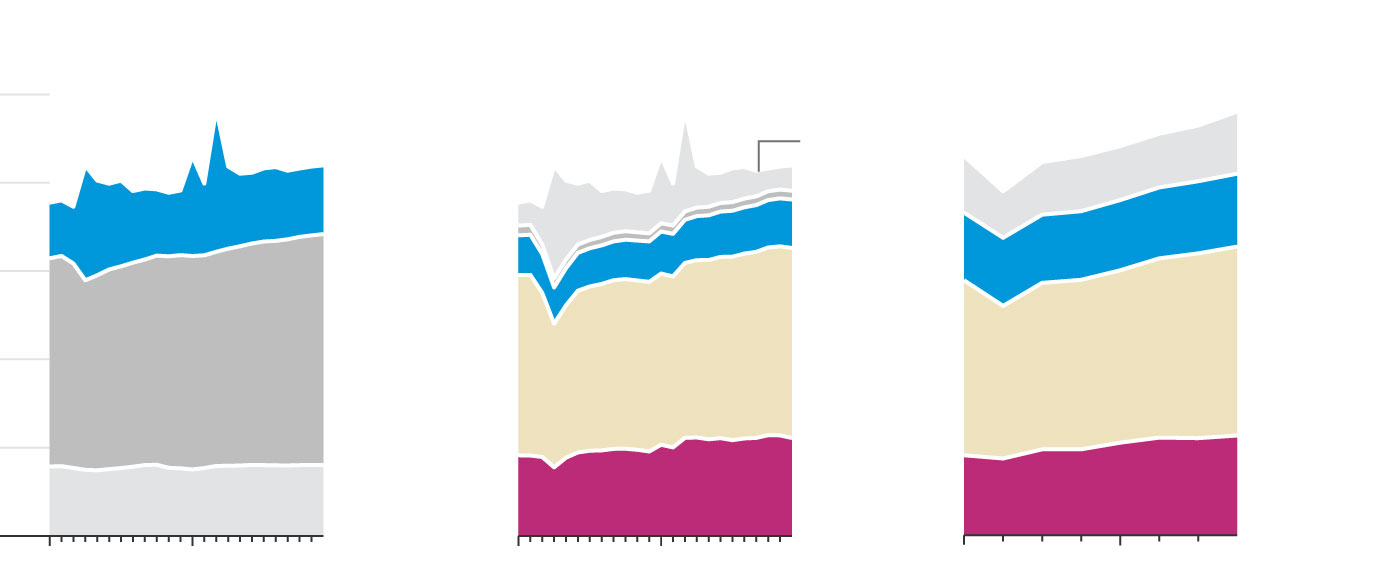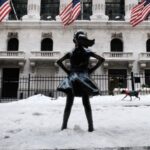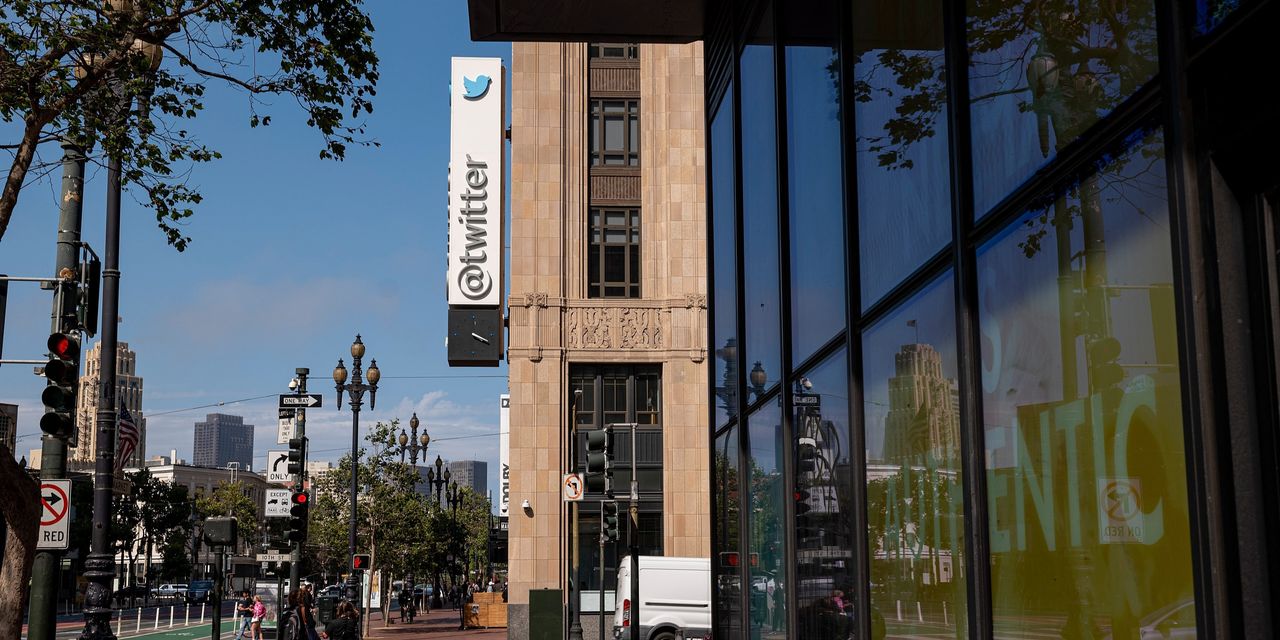Consumer perception of current economic conditions in December was almost even with April 2020 levels, when sentiment bottomed out following the first major restrictions to control the coronavirus pandemic.
While Americans’ feelings about their personal finances slid through much of 2021, concerns about buying conditions—amid continuing worries about inflation—fell drastically for much of the year.
Household income has declined from spikes that occurred as the government distributed pandemic-related stimulus. Still, many Americans have seen wages and benefits increase, as the economy rebounded from earlier disruptions from the pandemic.
At the same time, decades-high levels of inflation have tempered enthusiasm for spending.
The University of Michigan has seen less enthusiasm for large purchases during the pandemic, with 41% of consumers citing high prices as a reason not to buy in December. Uncertainty and a lack of affordability were the leading causes for hesitance throughout much of 2020.
Since the pandemic began, a sharp increase of Americans buying goods has helped offset slower spending in the larger services economy. At the end of 2021, service spending was picking up speed but could be hampered by the rise in cases from the more infectious Omicron variant.

Personal income…
…fuels spending…
…contributing to GDP
Rest of
economy
Government
benefits
Government
spending
Employee
pay and
benefits
Consumer
services
Consumer
services
Consumer
goods
Consumer
goods
Other
income

Personal income…
…fuels spending…
…contributing to GDP
Rest of
economy
Gov’t
benefits
Gov’t
spending
Employee
pay and
benefits
Consumer
services
Consumer
services
Consumer
goods
Consumer
goods
Other
income

Personal income…
…fuels spending…
…contributing to GDP
Rest of
economy
Gov’t
benefits
Gov’t
spending
Employee
pay and
benefits
Consumer
services
Consumer
services
Consumer
goods
Consumer
goods
Other
income

Personal income…
Government
benefits
Employee
pay and
benefits
Other
income
…fuels spending…
Consumer
services
Consumer
goods
…contributing to GDP
Rest of
economy
Government
spending
Consumer
services
Consumer
goods

Personal income…
Government
benefits
Employee
pay and
benefits
Other
income
…fuels spending…
Consumer
services
Consumer
goods
…contributing to GDP
Rest of
economy
Government
spending
Consumer
services
Consumer
goods
The rapid economic growth, driven by consumer spending, means that the U.S. economy has largely rebounded. It was within $150 billion of Federal Reserve U.S. gross domestic product projections made before the pandemic hit.
Supply constraints caused by the pandemic and high consumer demand has helped to drive up prices. This imbalance in the economy is dragging down Americans’ confidence to make purchases but could be short-lived. A Wall Street Journal survey of economists shows this rate is expected to rapidly fall, landing around a lower but still elevated 3% annual growth in 2022.
Demand for labor is still high, despite growing employment costs. Industries hit hard by the pandemic, such as leisure and hospitality businesses, have since seen large wage gains and a steep climb in payrolls. Leisure and hospitality jobs have recovered 2.6 million positions in 2021.
Likewise, retail jobs have outpaced the overall labor market, while those jobs have been more expensive to fill. Continued recovery in hiring for in-person services and shopping—at a time when the Great Resignation has driven up the costs of workers—shows that businesses think there will be room to grow.

Change in the number of employees*, since end of 2019
Employment Cost Index, change since the end of 2019
Leisure and
hospitality
Total
private
Service
providing
All private
workers
Leisure and
hospitality
Goods
producing

Change in the number of employees*, since end of 2019
Employment Cost Index, change since the end of 2019
Leisure and
hospitality
Total
private
Service
providing
All private
workers
Leisure and
hospitality
Goods
producing

Change in the number of employees*, since end of 2019
Employment Cost Index, change since the end of 2019
Leisure and
hospitality
Total
private
Service
providing
All private
workers
Leisure and
hospitality
Goods
producing

Employment Cost Index, change since the end of 2019
Leisure and
hospitality
Service
providing
All private
workers
Goods
producing
Change in the number of employees*, since end of 2019
Total
private
Leisure and
hospitality

Employment Cost Index, change since the end of 2019
Leisure and
hospitality
Service
providing
All private
workers
Goods
producing
Change in the number of employees*, since end of 2019
Total
private
Leisure and
hospitality
Following the rapid growth seen last year, the outlook for GDP growth is expected to return to more typical levels, according to many economists from The Wall Street Journal Economic Forecasting Survey.
WSJ Economists Survey forecasts for GDP , annual change

= 1 forecast
Median
forecasts
GDP ANNUAL CHANGE (%)

= 1 forecast
Median
forecasts
GDP ANNUAL CHANGE (%)

= 1 forecast
Median
forecasts
GDP ANNUAL CHANGE (%)

= 1 forecast
Median
forecasts
GDP ANNUAL CHANGE (%)

= 1 forecast
Median
forecasts
GDP ANNUAL CHANGE (%)
Write to Danny Dougherty at [email protected] and Andrew Barnett at [email protected]
Copyright ©2022 Dow Jones & Company, Inc. All Rights Reserved. 87990cbe856818d5eddac44c7b1cdeb8
Appeared in the February 2, 2022, print edition as ‘Inflation Fuels Consumer Pessimism.’








